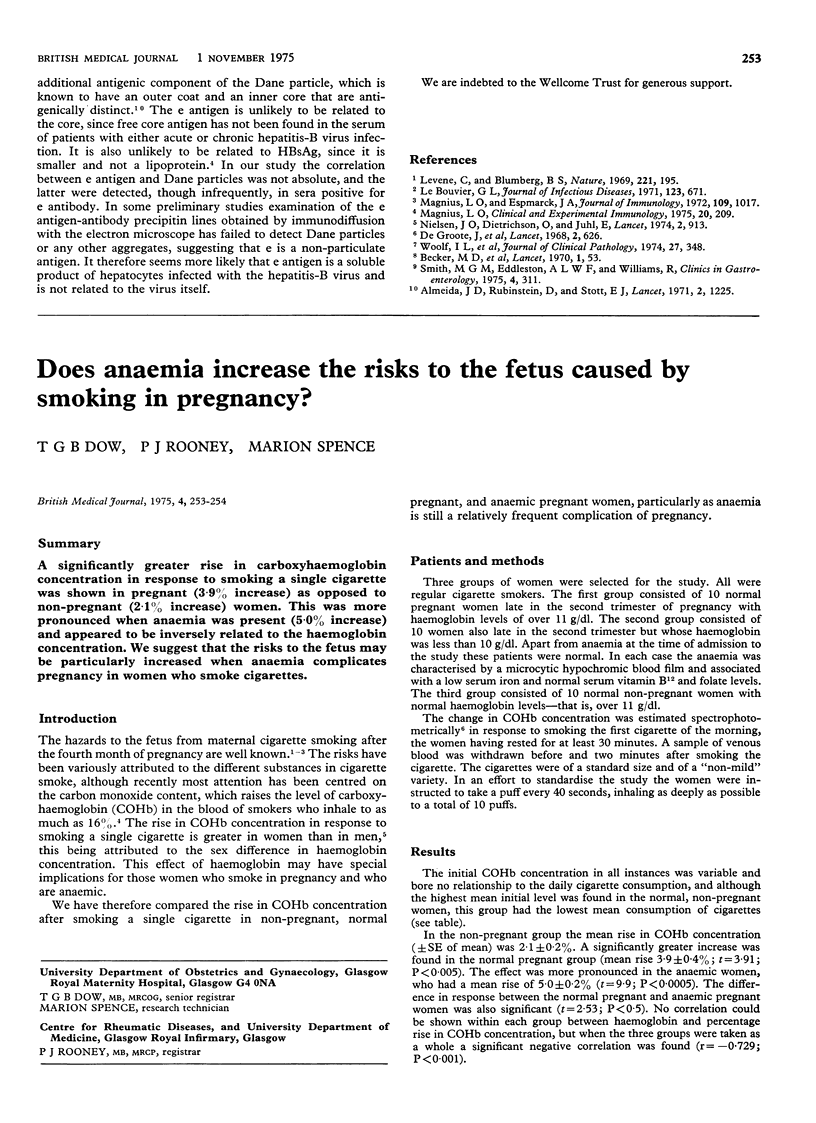Abstract
The clinical relevance of the e antigen-antibody system was investigated in 61 people persistently positive for hepatitis-B surface antigen, including 22 healthy carriers. The e antigen was not detectable in any of the healthy carriers, whereas it was found in 15 out of 28 patients with chronic aggressive hepatitis and two out of 11 with chronic persistent hepatitis. Its presence therefore indicates chronic liver disease but its absence does not exclude it. It may prove to be a particularly useful prognostic aid in chronic persistent hepatitis, since one of the two patients in whom it was found later developed aggressive hepatitis. In contrast, e antibody is of little diagnostic help, for, though it was found mostly in healthy carriers (18;82%), it was also detectable in 9 (23%) of the patients with chronic hepatitis. In 13 (76%) of the patients positive for e antigen Dane particles were seen on electron microscopy, but these were also present in 5 (19%) of the patients positive for e antibody. These findings are consistent with other evidence suggesting that e antigen is not a surface component of the Dane particle, but rather an independent soluble protein manufactured by the host in response to infection with the hepatitis-B virus.
Full text
PDF

Selected References
These references are in PubMed. This may not be the complete list of references from this article.
- Almeida J. D., Rubenstein D., Stott E. J. New antigen-antibody system in Australia-antigen-positive hepatitis. Lancet. 1971 Dec 4;2(7736):1225–1227. doi: 10.1016/s0140-6736(71)90543-5. [DOI] [PubMed] [Google Scholar]
- Becker M. D., Baptista A., Scheuer P. J., Sherlock S. Prognosis of chronic persistent hepatitis. Lancet. 1970 Jan 10;1(7637):53–57. doi: 10.1016/s0140-6736(70)91843-x. [DOI] [PubMed] [Google Scholar]
- De Groote J., Desmet V. J., Gedigk P., Korb G., Popper H., Poulsen H., Scheuer P. J., Schmid M., Thaler H., Uehlinger E. A classification of chronic hepatitis. Lancet. 1968 Sep 14;2(7568):626–628. doi: 10.1016/s0140-6736(68)90710-1. [DOI] [PubMed] [Google Scholar]
- Le Bouvier G. L. The heterogeneity of Australia antigen. J Infect Dis. 1971 Jun;123(6):671–675. doi: 10.1093/infdis/123.6.671. [DOI] [PubMed] [Google Scholar]
- Levene C., Blumberg B. S. Additional specificities of Australia antigen and the possible identification of hepatitis carriers. Nature. 1969 Jan 11;221(5176):195–196. doi: 10.1038/221195a0. [DOI] [PubMed] [Google Scholar]
- Magnius L. O. Characterization of a new antigen-antibody system associated with hepatitis B. Clin Exp Immunol. 1975 May;20(2):209–216. [PMC free article] [PubMed] [Google Scholar]
- Magnius L. O., Espmark J. A. New specificities in Australia antigen positive sera distinct from the Le Bouvier determinants. J Immunol. 1972 Nov;109(5):1017–1021. [PubMed] [Google Scholar]
- Nielsen J. O., Dietrichson O., Juhl E. Incidence and meaning of the "e" determinant among hepatitis-B-antigen positive patients with acute and chronic liver diseases. Report from the Copenhagen Hepatitis Acuta Programme. Lancet. 1974 Oct 19;2(7886):913–915. doi: 10.1016/s0140-6736(74)91127-1. [DOI] [PubMed] [Google Scholar]
- Woolf I. L., Boyes B. E., Jones D. M., Whittaker J. S., Tapp E., MacSween R. N., Renton P. H., Stratton F., Dymock I. W. Asymptomatic liver disease in hepatitis B antigen carriers. J Clin Pathol. 1974 May;27(5):348–352. doi: 10.1136/jcp.27.5.348. [DOI] [PMC free article] [PubMed] [Google Scholar]


